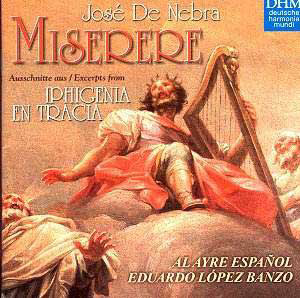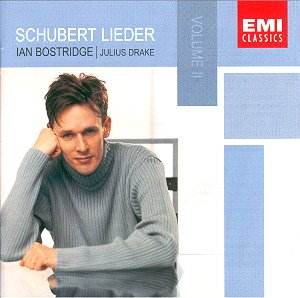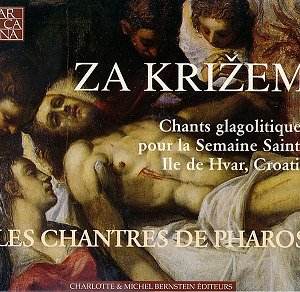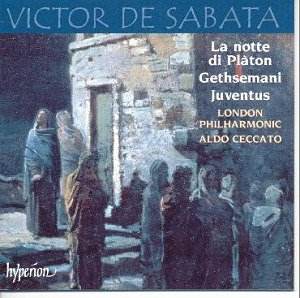 Composer: José de Nebra
Composer: José de Nebra
Works: Miserere, excerpts from Para obsequio a la deidad nunca es culto la crueldad, Iphigenia en Tracia
Performers: Marta Almajano (soprano), Xenia Meijer (mezzo-soprano), Al Ayre Español, Eduardo Lopez Banzo (conductor)
Recording: August – September, November 2000, Evangelische Kirche Gönningen, Germany
Label: DHM
The sacred music of José de Nebra, a pivotal figure in the Spanish Baroque, emerges vividly in this recording of his Miserere, a work imbued with rich emotional depth and stylistic complexity. Composed in the mid-18th century, this piece showcases a blend of sacred and secular traditions, reflecting the broader cultural currents of its time. Nebra’s work can be likened to that of his contemporaries, particularly Handel, whose influence permeates the fabric of the Miserere. The alternating structure of arias and plainchant mirrors the practices of the era, wherein the sacred and the theatrical coalesced, creating a resonant tapestry of sound that is both devotional and dramatic.
The performance by Marta Almajano and Xenia Meijer is noteworthy for its clarity and emotional honesty. Almajano’s soprano voice possesses a luminous quality that cuts through the textured orchestration, while Meijer’s rich mezzo-soprano adds depth to the harmonic interplay. Their approach is refreshingly restrained; vibrato is employed judiciously, allowing the text’s emotional weight to surface with clarity. This is particularly evident in the aria “Amplius lava me,” where Meijer’s nuanced phrasing captures the penitential spirit of the text, while Almajano’s soaring lines in “Domine, labia mea aperies” convey a fervent supplication that resonates deeply.
The technical execution of Al Ayre Español under Eduardo Lopez Banzo’s direction supports these vocal performances with a balanced orchestral backdrop. The ensemble’s playing is characterized by a vibrant articulation that mirrors the rhythmic vitality of the arias. The instrumental interlude “Allegro cantabile” from Para obsequio serves as a delightful contrast to the solemnity of the Miserere, showcasing the ensemble’s versatility and highlighting Nebra’s ability to navigate between the sacred and the secular. The recording quality captures the warmth of the church acoustics, enhancing the lush textures of the score without overwhelming the soloists.
While comparisons to Handel are unavoidable due to the stylistic parallels, Nebra’s Miserere stands on its own as a compelling work that deserves recognition beyond the shadow of its more famous contemporary. The harmonic language, while reminiscent of the Italian cantata tradition, introduces unique Spanish melodic contours that lend the music an identity distinct from the Baroque mainstream. For listeners familiar with the operatic and liturgical works of the time, Nebra’s ability to weave these influences together offers a rewarding experience.
This recording is a significant contribution to the growing catalog of Spanish Baroque music, revealing Nebra’s artistry in a manner that is both engaging and enlightening. It invites repeated listening, encouraging the exploration of its intricate layers and emotional landscapes. The combination of strong vocal performances, adept orchestral support, and high-quality engineering results in a compelling interpretation that will resonate with aficionados of Baroque music and those seeking to expand their horizons within this rich musical tradition.



